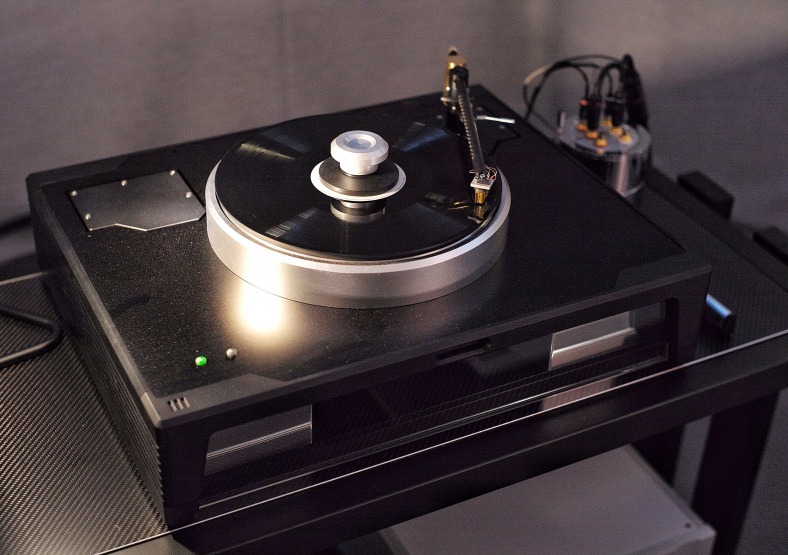regarding turntable design it is a well known fact that you may focus on reducing all possible external and internal sources of distortion in the concept and implementation to reach in the end a natural and harmonic sound.
Designers are going different ways when trying eliminating airborne- and structural noise. A very promising way is the air bearing design of e.g. The Apolyt (Acoustical Systems) or The Caeles (Gecom). With the current design the latter one needs 5-6 times more air at higher pressure than the Apolyt. Maybe we will see a change here with the next model carrying an even more sophisticated air bearing supplying air at lower pressure. As this will have no impact on the sound itself it may improve the floating support structure.
From my point of view it is absolute crucial to bring down the resonance frequency of a turntable design, maybe the most important issue in turntable building!!! I know as I had to work on improving isolation issues even on the Micro Seiki as well as at the Continuum installations. In the end neither the Micro, TechDas, Continuum etc. do have a real airbearing design but using air floating aspects in an appropriate way.
I am convinced that good isolation and maybe a Minus K platform will improve but not reach the results of an airbearing solution at 1 Hz. A real airbearing system is complex and needs a lot of equipment too. Just think of the big compressor. But it is very good! I still did not hear the Apolyt so far.
Mark Doehmann who designed my beloved Continuum Criterion is going in another direction using the Minus K vibration technology in his new Döhmann table I had a chance to hear at the last High End in Munich 2016.
Knowing all three designers of the mentioned tables personally and thankful of learning in some way just a little from them I am curious what Michael Fremer will tell us about the Döhmann table hopefully very soon. He is testing the Helix 1 since 4 months.


Minus K is working on springs enabeling dampening greater deviations of the tonearm if the rack or board is pushed, which you usually will not see in an audiophile’s room. What it means in terms of distortions and other table related issues we do not know – even after Mike Fremer’s enthusiastic review in Sterophile. Or did I miss something?

Eckart,
It’s incredible how many new designs are coming our way. I am wondering sometimes if they are really noticeably better then some previous solutions like the Rockport Sirius III Turntable, which I’ve heard and is wonderful.
I have a client friend who has a Rockport Sirius III Turntable, and a Garrard 301 with an EMT tonearm and Decca cartridge.
The Rockport has more detail, but the Garrard has more ‘drive and force’. I am thinking that much of that ‘drive and force’ is probably some type of acoustic distortion that I am hearing from the drive system, or maybe that ‘drive and force’ is because of the drive system but it is very engaging musically?
Norman
LikeLike
Norman,
Very true. Most designs are simple and cheap ones, just using a belt coming with a tiny motor. I am always wondering why they cost 10.000 or more? Ok tell a story around it and… The Rockport Sirius III is a different calibre like the Goldmund Reference and the big Micros/TechDas/Kronos/Apolyt/Continuum etc. In case the Garrard 301/401/501 are properly adjusted it is a lot of fun listening with these good tables, not necessarily is the dynamic you hear only a kind of distortion. Nevertheless you can not compare them with an EMT 927 or R 80.
E.
LikeLike